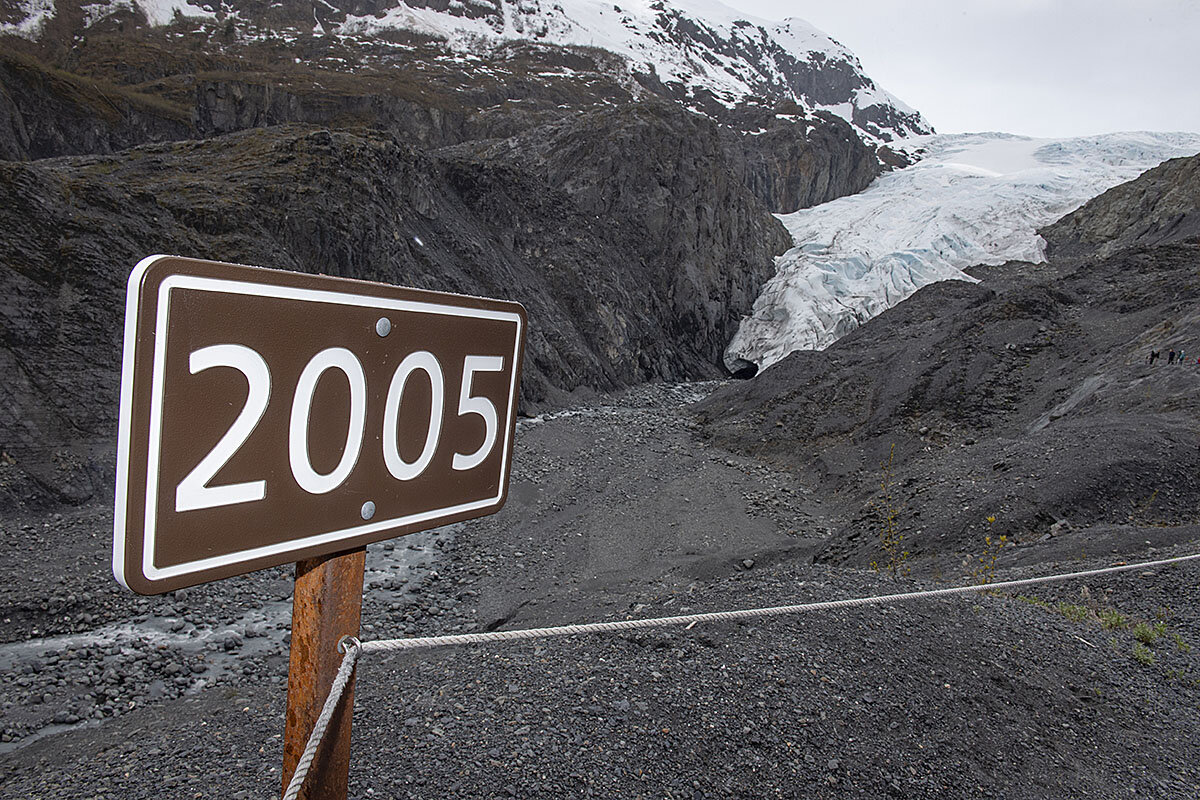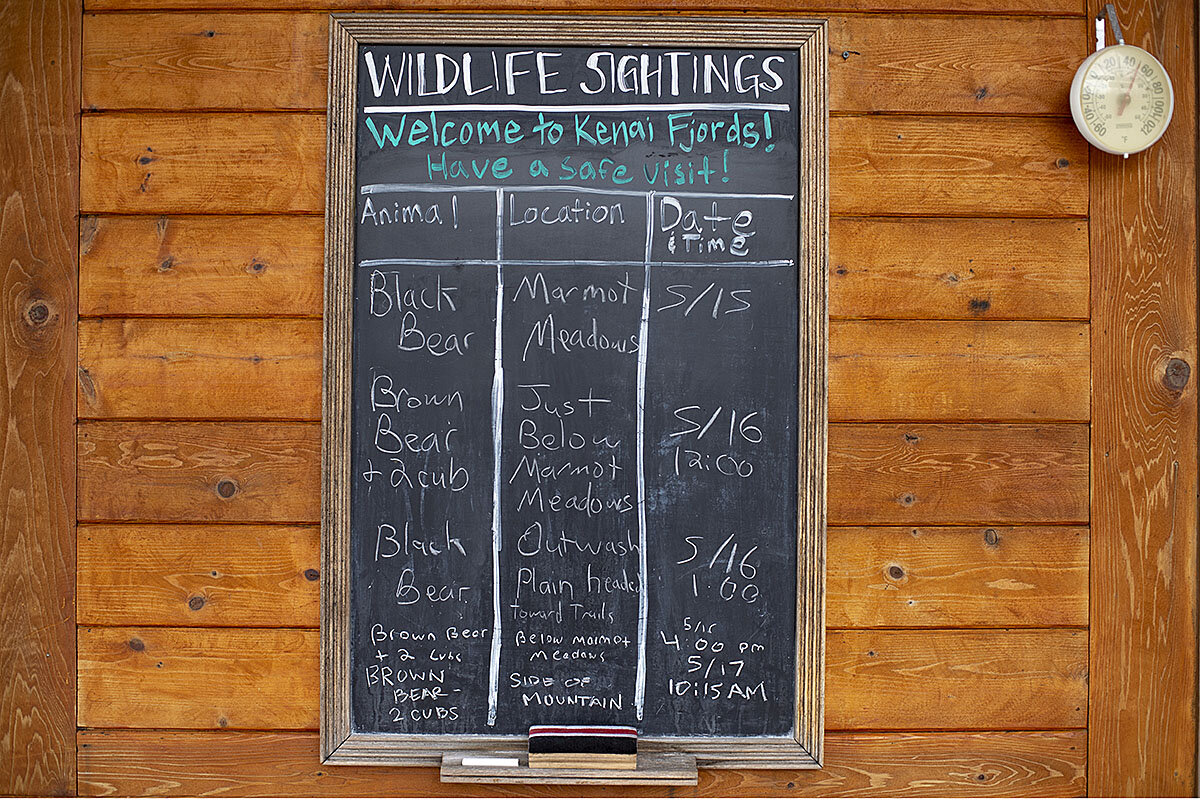A reporter bids farewell to Exit Glacier
Loading...
| KENAI FJORDS NATIONAL PARK, Alaska
It’s my first glacier, and I’m not really feeling it.
From the Exit Glacier parking lot it’s an easy walk to the overlook. I pass budding alder trees, then clamber up slate and gravel to reach a windswept vantage point.
And there it is, a giant finger pointing down a mountainside. I look for cobalt blue but all I see is grey and white, a frozen pack of rock and ice, cracked and bruised. There are flashes of blue, but from this distance it mostly resembles dirty shoveled snow on a sidewalk.
Why We Wrote This
The swift retreat of Exit Glacier, in Alaska’s Kenai Mountains, offers a clear sign of how climate change can affect a region in a very short time.
It matches the cloudy sky, and my mood. I feel oddly cheated by what’s there, even though it’s exactly what I came to see: A melting glacier, a casualty of climate change.
I’m hardly the first to make this journey and lament the lesson of Exit Glacier, of course.
In 2015, President Barack Obama stood at a lookout and enumerated the facts of glacial melting and rising sea levels. He stared into the distance then turned back to the cameras. “It is spectacular though,” he conceded, adding: “We want to make sure that our grandkids can see this.”
I’m thinking more about my son, age 6. By the time he visits Alaska, the aptly named glacier – more on that name later – may have exited altogether.
Exit, glacier. Curtain falls. Audience applauds. House lights go up.
The retreat began in the 1800s when Alaska was still Russian territory. After five centuries of expansion during the period known as the Little Ice Age, Exit Glacier reached its maximum expanse around 1815. Since then it has been retreating, slowly at first, roughly 3 feet a year, based on soil and tree-ring analysis.
Now the glacier is retreating faster, much faster, in winter and summer. In 2016 it shrank by nearly 300 feet in a single year. The adjective glacial no longer applies, it seems.
To walk the path to the lookout, then, is to tread a timeline of climate change, passing markers of the glacier’s historic extent. The marker for 1917 is about a mile from its current point.
The path is paved as far as a small pavilion of rough-hewn stone pillars and a vaulted wooden roof. When the National Park Service built it in 1987, it offered a sweeping view of the glacier.
Today it’s a lovely spot. I’m serenaded by birds, and rushing spring melt. But all I see are the alder trees that surround the pavilion, which has been repurposed as an educational stop for visitors curious about the glacier’s shrinkage. One interpretative sign is titled Living Laboratory, a nod at the scientific value of studying glacier retreats.
Good for the scientists. How long before the tourists stop coming to Exit Glacier, I wonder. The cruise-ship excursions, the Anchorage day-trippers, will they go elsewhere? What happens then to the park infrastructure built for visitors to a glacier that is creeping out of view, year by year?
An Alaskan couple stops at the pavilion to talk. The woman remembers visiting in the 1990s, when you could still walk onto the glacier. That was part of the fun, standing on a centuries-old freeze, peering into blue crevasses. Her last trip here was six years ago, she says, when the glacier was closer to the lookout. “That’s something we can clearly grasp. Six years,” she says.
I walk back to my car and take the two-lane road down the valley, burning more gas to add to the stock of carbon in the atmosphere. I wonder if the $1.25 offset I paid that day is real, as real as the decade markers along the path to Exit Glacier.
On a long curve I pull over to take a final photo. The spring sun is out and I see it glance off the snowy mountains above the glacier. This is the edge of the Harding Icefield, which covers 300 square miles, not counting the 38 glaciers that descend from it. It’s the largest icefield in the U.S., and the first documented crossing was made in 1968. The expedition group traveled eastward for eight days and exited at this point, which is how the glacier got its name.
From this distance, gazing up the open valley, I sense the immensity of the icefield. The finger that descends may be pulling back but it also seems to reach down, here at the edge of Alaska, the last frontier. I breathe the cool air. Then I make my exit.








